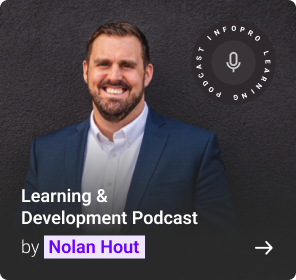We all want to work in a great place. In our current 2016 jargon, this also is called striving for a “culture of employee engagement.” Articles and books abound in providing theories, research results and outcomes on productivity and profitability, motivating us to put certain practices into place. Expensive? Not really. Hard to do? Definitely!
Employees who feel they are working in a great place:
- Believe in the firm’s vision and values, and have an emotional connection to the firm.
- Put discretionary effort into their work; they demonstrate a willingness and ability to contribute to the firm’s success.
- Are fully involved and enthusiastic about their jobs and the firm itself.
It’s been determined that leaders which effectively capitalize on the strengths of all employees, and leverage their differences and values, have the most-engaged employees. At the same time, research shows that companies that disregard diversity as a vital component of their business strategy have a higher percentage of disengaged workers.
Also, employees with the highest level of engagement perform 20 percent better and are 87 percent less likely to leave the organization, according to a survey by Towers Perrin. And a study by the Hay Group determined that engaged employees are as much as 43 percent more productive.
Considering these findings, here are some of the important foundational elements that experts say are needed to create a great place at which to work:
- Trust in the leadership
- Alignment of vision/values and goals
- The organization’s reputation in the marketplace
- Hands-on management
- A positive work environment
While all of these five are important, a positive work environment is the one element that is difficult to define. It can be observed and “felt” by employees, but it’s not always easy to create.
So while there are many more, let’s take a look at two key factors that great leaders do to create a positive work environment:
1. Managing Stress Levels
Recent research by Deloitte found that 79 percent of companies are seriously worried about engagement and retention (only 13 percent were found to be highly engaged), with two-thirds of the companies citing “the overwhelmed employee” as a top challenge. Despite those statistics, only 8 percent of companies have programs focused on this challenge.
>So how do you develop a less-stressful work environment?
- Create flexible work hours, innovative ways for telecommuting, working remotely, etc. Companies can find their way to implement these ideas based on the type of business (manufacturing v service; one shift vs. two or three; global vs. regional or national).
- Encourage employee support groups (formalized or informal) at all levels where associates can discuss work-life balance challenges, share solutions and gain support. Some companies are creating an ERG (Employee Resource Group) just to focus on this all-important issue; others are encouraging informal groups.
- Create health and wellness programs. According to Adrianna Huffington, “health creates wealth” with healthy, focused people being happier, making better decisions, becoming better leaders and driving greater value for their organizations. Creating a culture that ensures employees are not burning out – utilizing techniques such as taking time out for self-awareness and “seeing” the big picture – truly do pay off.
2. Create a Safe and Enjoyable Work Environment
Josh Bersin describes the “Simply Irresistible Organization” as one in which all employees (not just those who want to move into management or get promoted) can move from job to job supported by leadership in what is called talent mobility programs. This is one of the strongest drivers of engagement and continuous learning. Bersin reports that creating such a culture of “recognition, learning and reciprocity” by one company increased engagement by 30 percent.
>How do you create a save, enjoyable work environment?
- Ensure that “failure is an option” in select and appropriate areas of employee responsibilities. Because an “avoidance” mindset can cause employees to narrow their vision, remain set in their ways and encourage “groupthink,” create areas in which employees can actually stretch, be rewarded for failure and learn from it. (Of course, there are areas such as compliance-related work where boundaries need to be determined in advance.)
- Create a break from problem solving to rest the conscious mind. We’re learning so much more about how the brain functions, and one key point is that during a break from problem solving, the unconscious mind is still working overtime. So when a team is stuck and you’re the leader, or you’re in a team that’s stuck…take a break! That’s why on a Monday, with a weekend behind us, the team can look at the same problem that seemed daunting a week earlier and quickly find a solution.
- Allow employees autonomy and the path to achieve competence. Adults flourish when they have choices within the context of the work they need to accomplish – where and how they do it. Let friendships evolve within the workplace to provide that all-important sounding board while recognizing and celebrating individual and team milestones. People go to work every day wanting to be successful. Creating a collaborative and creative workplace in which work can be accomplished along with having some fun has been proven again and again to result in true engagement.
Sources
- “The Best Place to Work: The Art and Science of Creating an Extraordinary Workplace”, by Ron Friedman, Ph.D., 2014, Penguin Group.
- “The Five Elements of a ‘Simply Irresistible’ Organization”, by John Bersin, Deloitte Consulting.
- Great Places to Work Institute, (http://www.greatplacetowork.com)
- Gallup Research (http://www.gallup.com/poll/165269/worldwide-employees-engaged-work.aspx)
- Deloitte Human Capital Research (http://www.deloitte.com/view/en_US/us/services/consulting/human-campital/human-capital-trends/relative-urgency/index.htm
- “Thrive: The Third Metric to Redefining Success and Creating a Life of Well-Being, Wisdom, and Wonder”, by Adrianna Huffington, Harmony Books
- “How Diversity and Inclusion Drive Employee Engagement”, by Dr. Rohini Anand, DiversityInc Magazine, www.diversityinc.com




